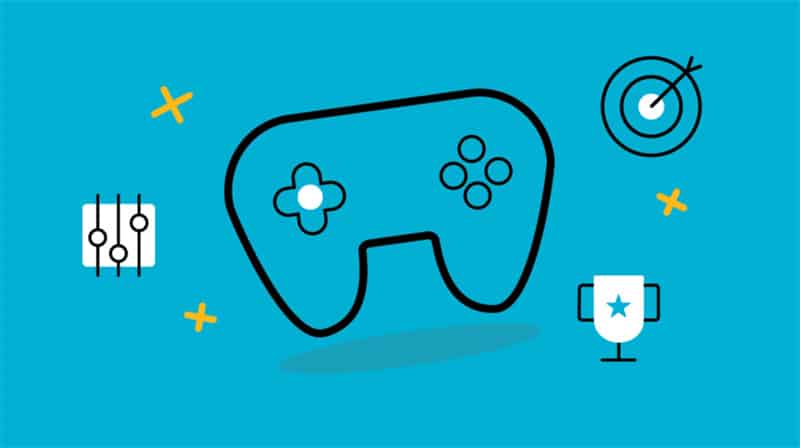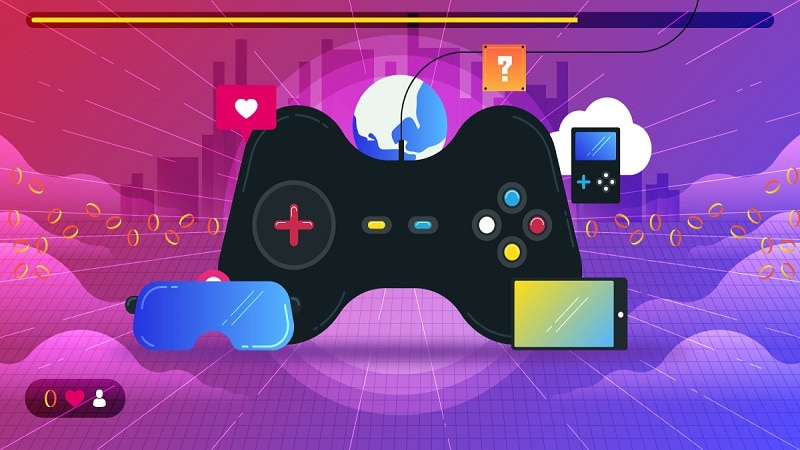While some may think of video games as just a form of entertainment, there are many educational benefits associated with playing them. Let’s figure everything out in detail.
Pros and Cons of gaming for student
The pros of gaming for students can be numerous. Gaming is a great way to have fun and socialize with others, especially if it’s a multiplayer game. It can also help sharpen problem-solving skills and even improve hand-eye coordination. Plus, gaming gives students an opportunity to learn new technologies and hone their computer skills.
On the flip side, there are some cons associated with gaming as well. For instance, it can be difficult to balance gaming and school work – excessive hours spent on video games could lead to lower grades or missed assignments. Additionally, many games involve violence which may not be appropriate for younger audiences; depending on the type of game, this could cause psychological issues over time as well. Finally, some games can be costly and may take away from other educational materials or opportunities.
Overall, like everything else, gaming should be done in moderation when it comes to students. With the right guidance and supervision, it can provide great benefits for teaching problem-solving skills and socialization. Furthermore, exploring new technologies through gaming can encourage students to further explore their interests in computer science or coding. Ultimately, if used correctly, gaming has the potential to improve a student’s education and make learning more engaging.
By having an understanding of both sides of the issue – pros and cons – parents can help their children use gaming responsibly and productively as part of their educational experience. It is ultimately up to parents to find the right balance and make sure gaming is being used as a tool to help students be successful in their schooling. In this way, everyone can get the most out of gaming – both entertainment and education.
Gamification in education

Gamification in education is a relatively new concept that is gaining traction in classrooms across the world. It involves using game-based techniques, such as leaderboards, points, badges and rewards to engage students and motivate them to learn. This approach has been shown to be effective, with studies showing improved student performance when gamified elements are incorporated into learning activities.
The use of gamification also encourages collaboration among students, fostering greater engagement in both their own work and the work of their peers. Gamification helps teachers create an engaging learning environment that keeps students interested and motivated while they learn. By providing feedback on student progress through these game-like tools, teachers can better guide pupils toward mastering educational goals. In addition, gamification has potential for increasing student engagement and motivation in traditionally more challenging areas of study, such as math and science.
Though the use of gamification can be beneficial in many ways, it is important to consider potential drawbacks when implementing it into a classroom. For example, if students become too focused on earning points or rewards, they may neglect other important aspects of learning such as creativity and critical thinking. Additionally, there is the risk that gamified activities could lead to student competition rather than collaboration. Finally, it is worth noting that gamification should not be used as a replacement for traditional teaching techniques; rather, it should be seen as an additional tool in an educator’s arsenal.
By carefully considering these potential pitfalls and integrating the right game-based elements into the classroom, educators can make use of gamification to create an engaging learning experience that motivates and encourages students to reach their educational goals. Gamified activities can heighten student engagement, foster collaboration among peers, and provide feedback on individual progress in a way that traditional teaching methods cannot. In this way, gamification has the potential to revolutionize the way we learn.
Key 4 benefits of gaming for students

- Improved social skills: Gaming can help shy students become more outgoing and confident as they interact and collaborate with others to achieve common goals. Whether playing online or in person, gaming encourages communication, develops team-building skills, and helps players learn how to take initiative and share responsibilities.
- Stress relief: Gaming can be a great outlet for pent-up energy, frustration, and anger by providing an immersive experience that engages the mind completely, leaving little room for other worries or anxieties. This distraction can be incredibly helpful when dealing with difficult topics such as studying for exams. In such cases students can delegate some difficult tasks to https://domypaper.me/do-my-assignment/ and spend some time with pleasure and recover resources.
- Increased cognitive development: Games involve problem solving, strategy planning, critical thinking, decision making and other higher order thinking skills that promote brain development and intelligence.
- Encourages personal development: Through gaming, students can learn new skills that may help them in their academic or professional life in the future such as problem solving, communication and collaboration. Additionally, games can help with goal setting and self-motivation by providing rewards when goals are achieved. Gaming also encourages creativity, which is a great way to practice thinking outside the box!
The bottom line
In conclusion, gaming can be a great way for students to relax and enjoy themselves after a long day of studying or completing school assignments. It offers an exciting escape from the pressures of school life and can provide positive mental health benefits such as improved cognitive functioning and increased concentration.
Additionally, it’s been shown that gaming can also improve hand-eye coordination, enhance problem-solving skills, and promote social interaction when playing with friends or family. With all these advantages, it’s no wonder why more students are turning to gaming as an effective form of leisure time activity. Ultimately, gaming is a great way for students to unwind and have some fun in between studying – just make sure you don’t overdo it!
